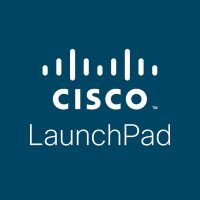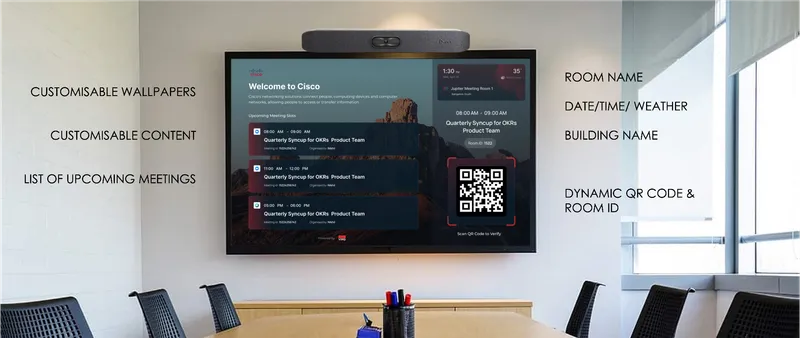
Cisco LaunchPad
View Brand PublisherCisco LaunchPad portfolio startup, Ving Hybrid, is simplifying the future of work
It might have been necessitated by the COVID-19 pandemic, but the hybrid work model is now being embraced by several companies as it combines flexibility with productivity. While working from home, office or any other space has its pros and cons, striking a balance among them is what defines the future of work.
Productivity is what ultimately matters, no matter where and when work is done.
In 2020, former Cisco colleagues Amitabh Patney and Aditya Pisupati set out to build (Ving), to make the shift from work-from-home to a hybrid environment seamless for both enterprises and employees. Based in Bengaluru and Singapore, the startup is addressing the two most important bottlenecks in today's work environment - seamless collaborations and accessible distraction-free workspaces.
An idea born during a crisis
In 2020, Cisco, a pioneer in workplace transformation, was working on building a new business model for immersive video conferencing, and that’s where Amitabh and Aditya came together to spearhead the project.
With over 26 years of experience, the last 13 at Cisco, Amitabh led the $170-million services sales business for India and SAARC. He has also led Strategic Initiatives and the Partner Org. Before that, he has worked with organisations like 3M India, Akzo Nobel and Verizon Business, among others.
Aditya has worked for 17 years across sectors like media, financial risk management, medical technology and art. He has been associated with the collaboration industry in Cisco for over a decade where he developed and deployed thousands of VC rooms and collaborative solutions for global customers. He also founded Artflute.com, a thriving global art marketplace in 2012.
A few months into the project and with the pandemic at its peak, it was evident that there was going to be a huge market transition. The duo wanted to capitalise on it as an independent, OEM-agnostic platform. With their extensive experience of deploying and managing solutions at Cisco, they clearly recognised the bottlenecks customers would face while migrating to hybrid work settings. Since July 2020, they have been working full-time building Ving Hybrid.
Seamless collaboration and Easy access to distraction free work spaces are key to creating a hybrid work environment, and that's exactly what Ving solutions —Ving Meet and Ving Spaces — are all about.
From Ring to Ping to Ving
"Earlier, people used to Ring each other. More recently with enterprise chats, they Ping each other. The pandemic has established that the future of collaboration is video and that's where the name Ving (Videoing) comes from. We're building an OEM-agnostic software as a service (SaaS) platform for enterprises and co-working spaces. This platform makes the transition from remote work to a hybrid model seamless," says Aditya Pisupati, Founder and CEO.
With hybrid work scenarios becoming the norm, teams are now distributed. Collaboration between people joining from private VC rooms in offices, from their laptops at home, or VC rooms in co-working spaces is extremely complex.
The startup's product 'Ving Meet' enables effective cross-border, cross-device collaboration. It unifies experiences across meeting platforms and VC camera hardware, thereby simplifying collaboration and saving up to 75 percent costs for organisations.

(Picture of a Ving Room in a workspace)
From office to home to anywhere
Another problem the startup addresses is enabling employees to work from anywhere in a distraction-free, secure, and productive environment. Traditional office structures usually follow a centralised approach to a workspace, but with hybrid work settings gaining traction, companies are moving to a hub & spoke model. Hub is usually an owned office and spokes are leased desks in a co-working space.
With 'Ving Spaces', employees can seamlessly discover, book and walk into any of these office spaces. They just need to swipe their badge and connect to a secure network – just like they would in their own office. Organisations will have real-time visibility on where their employees are working from and what applications they're accessing. They can also set spending limits for each department, team and employee, and generate space utilisation analytics, thereby reducing real estate and overhead costs.
Both these services are built on top of their proprietary “Future Ecosystem for Work and Life” (FEWL) platform. This is an open, secure, flexible and scalable platform that can be integrated with third-party hardware and software.
The objective is to:
- Simplify user experience that drives productivity
- Offer business-critical analytics to help optimise costs
- Centralise manageability across services for easy controls
- Improve bottom lines
- Provide ample flexibility to employees so that they can achieve work-life equilibrium
Integrating with service providers
Ving makes it simple for organisations and employees to custom build their ecosystems, with third-party service providers that can be plugged into the platform.
Ving Meet module includes seamless integration with VC camera OEMs like Logitech, Cisco, Poly or any VC camera model, as well as any meeting platforms like Zoom, Webex, MS Teams, Google Meet, etc.
Ving Spaces module plugs into the booking platforms of various shared spaces enabling seamless booking of on-demand VC rooms and desks for enterprise employees to work and collaborate from a professional distraction-free environment.
The future roadmap includes room control solutions, building management solutions, enterprise resource planning, travel booking platforms and expense management tools in the platform.
Although Ving has competitors for point solutions, what makes it stand out is that it enables its users to build unique workflows and user experiences by cross-leveraging data points from each of the services mentioned above.
Association with Cisco LaunchPad
Having worked with Cisco, the founders were well aware of the kind of support they would receive from Cisco LaunchPad (CLAP), an accelerator programme by Cisco India. The programme supports tech and tech-enabled startups and nurtures co-development, co-creation, new business models and joint go-to-market, among others.
CLAP granted pre-seed funding and helped Ving accelerate its engagement with global engineering and sales teams, which in turn helped them fast track the product build. "We were able to have focused one-on-one conversations with Cisco leaders that helped us fine-tune our GTM. We're already in discussions with the sales teams at Cisco to bundle our platform and provide a comprehensive solution to end customers," says Amitabh Patney, Co-founder and CBO.
The startup is currently conducting pilots at large multinationals and reputed co-working spaces, and plans to accelerate its entry into the international market soon.
Behind the scenes: The team and the road ahead
Ving was born at the peak of the COVID-19 pandemic and it was a challenge to build a complex solution such as this when the entire team was working remotely. At the core of Ving, is the operating system that is built by engineers with over 15 years of experience in building platforms, integrations and products.
However, what makes the platform extremely easy to deploy and adopt is the amazing UI/UX, supplemented by thoughtful product design, which is led by a team of designers and developers who have worked on market-leading platforms like Cleartrip, BookMyShow & Byju’s.
The startup doesn't have an office and the founders say, they'll never have one. "We had to build a solution to simplify hybrid work while facing the difficulties of hybrid work – day in and day out. We literally built the platform to solve our own problems, and today all our employees use Ving to work and collaborate. We're offering the same to our customers to help them build their own, customised hybrid ecosystem," says Aditya.
Amitabh adds, "The future of workspaces is flexible, secure and collaborative. Organisations will have no option but to hire talent from different geographies and ensure that they create a productive environment for these employees. Ving will be a catalyst that will lead this transition and help organisations with this shift.”








